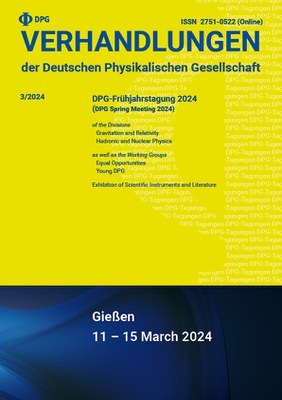Abstract:
Studying the excitation spectra of hadrons is crutial for gaining a better understanding of the strong interaction in the non-perturbative regime. In order to extract the quantum numbers, resonance parameters, and couplings of bound states formed in a reaction from the angular distributions of the decay products in the final state, a partial-wave analysis is usually performed.
It is important to test the implementation of the complex algorithm. One possible way is an input-output study, which proceeds in the following way: (i) generate pseudo-data from a physics model for a given reaction; (ii) perform a partial-wave analysis on the pseuda-data and compare the result to the input parameters. In the case presented in the poster, we apply this procedure to COMPASS-like diffractive reactions of the kind π−+p→ X−(→π−π+π−η)+p, with X− as intermediate resonances. The study helps to debug the implementation, but also allows for further systematic studies by changing the fit model, including background processes, etc.
Supported by BMBF.
